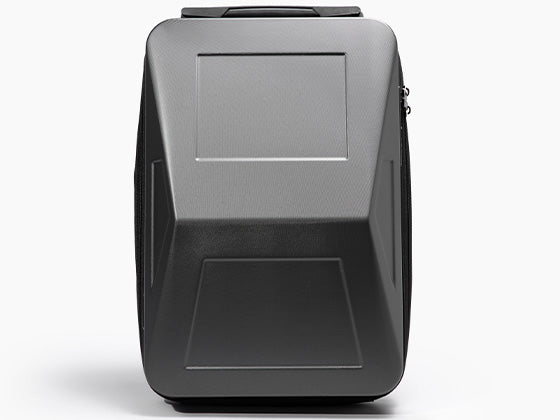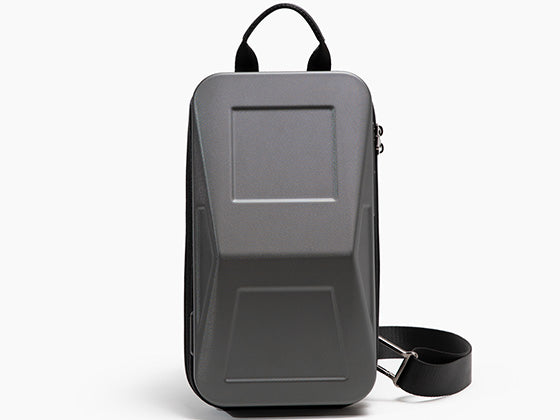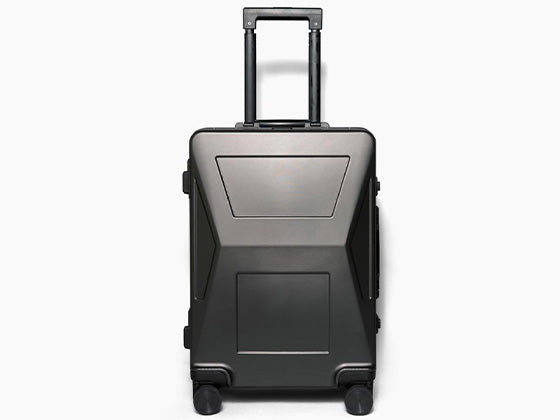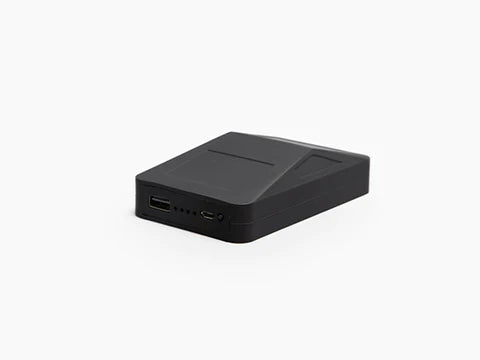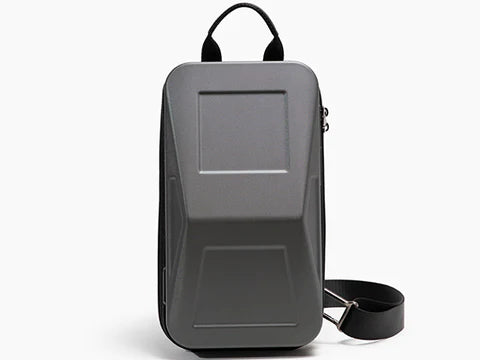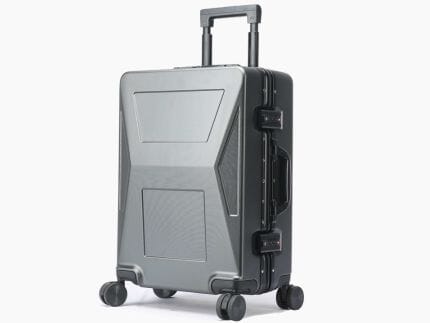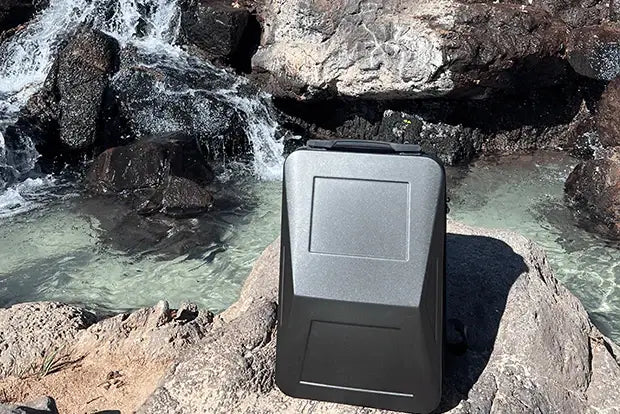-
Portable charger or power bank - This is a small, portable device that can be easily carried in a backpack or purse and can be used to charge your phone on the go.
-
Solar powered charger - This is a portable device that uses solar panels to generate power and can be used to charge your phone while traveling.
-
Car charger - This is a portable device that plugs into your car's cigarette lighter and can be used to charge your phone while on the road.
-
USB charger - This is a small, portable device that plugs into your computer or laptop and can be used to charge your phone while traveling.
-
External battery case - This is a protective case that also contains a built-in battery, allowing you to charge your phone while on the go.
The Importance of Portable Charging Devices for Travelers
As technology continues to advance, our reliance on electronic devices has only increased. From smartphones and laptops to tablets and cameras, we rely on these devices for communication, entertainment, and work. But with increased usage comes the need for reliable and convenient charging options.
Traveling can be a stressful and hectic experience, and the last thing you want is for your electronic devices to run out of battery power at an inopportune moment. This is where portable charging devices come in. These small, portable devices can be easily carried with you on your travels and can be used to charge your electronic devices on the go.
There are several different types of portable charging devices available, each with its own unique features and advantages. In this article, we will explore the different types of portable charging devices, their benefits, and how they can help you stay charged while traveling.
- Portable charger or power banks
One of the most popular and widely available portable charging devices is the portable power bank. These small, compact devices are designed to be easily carried in a backpack or purse and can be used to charge your electronic devices on the go such as the Cyberpowerbank.
Portable power banks come in a range of sizes, from small, pocket-sized devices to larger, more powerful ones. The amount of charge that a power bank can hold is measured in milliamp-hours (mAh), and the higher the mAh rating, the more charge the power bank can hold.
To use a power bank, you simply connect your electronic device to the power bank using a charging cable. The power bank will then transfer its charge to your device, allowing you to continue using it without worrying about running out of battery power.
One of the main advantages of portable power banks is their convenience and portability. They are small and lightweight, making them easy to carry with you on your travels. They also come with multiple charging ports, allowing you to charge multiple devices at the same time.
Additionally, power banks are widely available and can be easily purchased at electronics stores or online. They are also relatively inexpensive, making them an affordable and convenient option for travelers.

- Solar powered chargers
Another type of portable charging device is the solar charger. These devices use solar panels to generate power and can be used to charge your electronic devices while on the go.
Solar chargers are typically larger and bulkier than power banks, as they need to be able to accommodate the solar panels. They are also typically more expensive, as the technology used to generate power from the sun is more complex.
To use a solar charger, you simply set it up in a location where it will be exposed to sunlight and connect your electronic device to the charger using a charging cable. The solar panels will then generate power and transfer it to your device, allowing you to charge it while on the go.
One of the main advantages of solar chargers is their ability to generate power from the sun. This means that you can charge your devices even if you are in a remote location without access to electricity.
Additionally, solar chargers are environmentally friendly, as they use a renewable energy source to generate power. They are also relatively durable and can withstand rough conditions, making them a good option for travelers who will be spending time outdoors.
However, there are some drawbacks to using solar chargers. For example, they require sunlight to generate power, so they will not work at night or in cloudy conditions. They are also typically larger and bulkier than power banks, making them less convenient to carry with you on your travels.

- Car chargers
If you are traveling by car, you can use a car charger to keep your electronic devices charged on the go. These portable charging devices are designed to be plugged into your car's cigarette lighter and can be used to charge your mobile phone's and electronic devices while you are driving.
Car chargers come in a range of sizes and styles, from simple, single-port chargers to more advanced models with multiple charging ports and additional features. The amount of charge that a car charger can provide is typically measured in amps, and the higher the amp rating, the faster the charger will be able to charge your devices.
To use a car charger, you simply plug it into your car's cigarette lighter and connect your electronic device to the charger using a charging cable. The car charger will then transfer its charge to your device, allowing you to continue using it without worrying about running out of battery power.
One of the main advantages of car chargers is their convenience and ease of use. They are easy to set up and can be used to charge your devices while you are on the road. They are also typically less expensive than other portable charging devices, making them an affordable option for travelers.
However, there are some drawbacks to using car chargers. For example, they can only be used while you are driving, so they are not a good option if you are traveling by other means. They are also typically less powerful than other portable charging devices, so they may not be able to fully charge your devices.

- USB chargers
Another type of portable charging device is the USB charger. These small, compact devices are designed to be plugged into your computer, laptop or wall charger and can be used to charge your mobile devices like a Nintendo switch while you are traveling.
USB chargers come in a range of sizes and styles, from simple, single-port chargers to more advanced models with multiple charging ports and additional features. The amount of charge that a USB charger can provide is typically measured in volts-amperes (VA), and the higher the VA rating, the faster the charger will be able to charge your devices.
To use a USB charger, you simply plug it into your computer or laptop and connect your electronic device to the charger using a charging cable. The USB charger will then transfer its charge to your device, allowing you to continue using it without worrying about running out of battery power.
One of the main advantages of USB chargers is their convenience and ease of use. They are small and lightweight, making them easy to carry with you on your travels. They are also widely available and can be easily purchased at electronics stores or online.
Additionally, USB chargers are typically less expensive than other portable charging devices, making them an affordable option for travelers. They are also versatile, as they can be used with a wide range of electronic devices, including smartphones, tablets, and laptops.
However, there are some drawbacks to using USB chargers. For example, they require access to a computer or laptop in order to work, so they are not a good option if you are traveling without a computer. They are also typically less powerful than other portable charging devices, so they may not be able to fully charge your devices.

- External battery cases
Another type of portable charging device is the external battery case. These protective cases are designed to fit around your electronic device and contain a built-in battery, allowing you to charge your device while on the go.
External battery cases come in a range of sizes and styles, and are designed to fit specific types of electronic devices. The amount of charge that an external battery case can provide is typically measured in milliamp-hours (mAh), and the higher the mAh rating, the more charge the battery case can hold.
To use an external battery case, you simply slide your electronic device into the case and connect it to the battery using a charging cable. The battery case will then transfer its charge to your device, allowing you to continue using it without worrying about running out of battery power.
One of the main advantages of external battery cases is their convenience and portability. They are small and lightweight, making them easy to carry with you on your travels. They also provide additional protection for your electronic device, as they are designed to fit securely around it and protect it from damage.
Additionally, external battery cases are widely available and can be easily purchased at electronics stores or online. They are also relatively inexpensive, making them an affordable and convenient option for travelers.
However, there are some drawbacks to using external battery cases. For example, they are designed to fit specific types of electronic devices, so you may need to purchase a separate battery case for each of your devices. They are also typically less powerful than other portable charging devices, so they may not be able to fully charge your devices.

Conclusion
In conclusion, portable charging devices are an essential tool for travelers. They provide a convenient and reliable way to charge your electronic devices while on the go, ensuring that you can stay connected and productive even when you are away from home. Whether you choose a portable power bank, solar charger, car charger, USB charger, or external battery case, there is a portable charging device that will meet your needs and help you stay charged while traveling.
